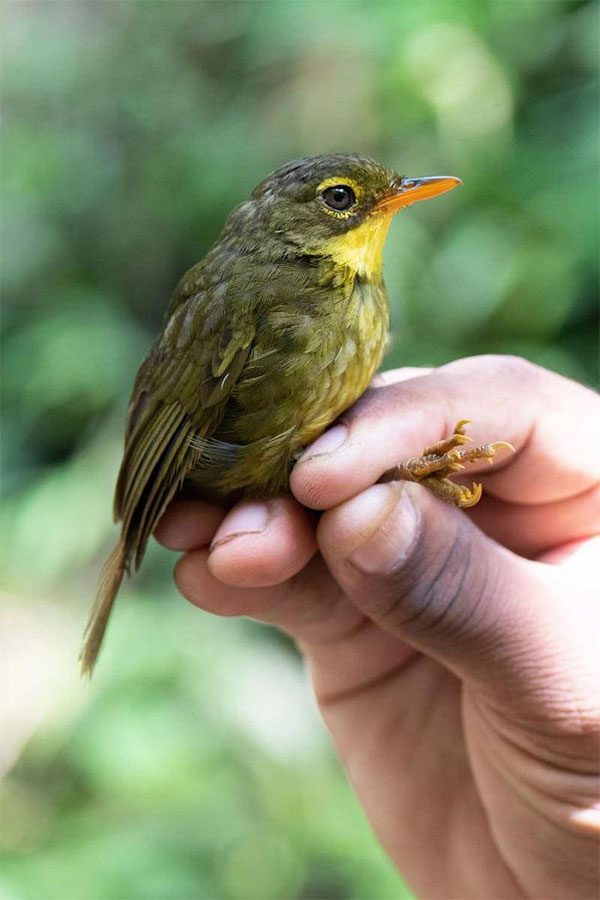On March 1, conservationists were thrilled to announce the natural return of the Dusky Tetraka, also known as Crossleyia tenebrosa – a yellow-throated songbird native to Madagascar – after a 24-year absence.
This bird was last seen in 1999 in the northeastern tropical forests of Madagascar, which is considered one of the biodiversity hotspots, home to hundreds of unique vertebrate species. Scientists confirmed sightings of this bird twice recently during an expedition to the remote areas of this island nation.

Dusky Tetraka reappears in nature after 24 years. (Photo: AFP).
In December 2022, a team of international researchers, led by the Peregrine Fund based in the United States, journeyed for hours to the last known location of this bird. Despite being officially protected, much of the forest has been cleared for vanilla farming.
After more than a week, a team member spotted and quickly recorded a Dusky Tetraka hopping through dense underbrush near the rocky riverbank. A second research team also noted a Dusky Tetraka moving around thick, damp bushes by the riverbank, foraging for insects and other small creatures.
The Dusky Tetraka’s preference for living in areas near rivers has also been studied by scientists, shedding light on the reasons for its long absence.
The Dusky Tetraka is one of the top 10 most sought-after extinct birds. Over half of Madagascar’s birds (approximately 115 species) are endemic, meaning they are not found anywhere else. More than 40 bird species on the island are listed as endangered in the International Union for Conservation of Nature (IUCN) Red List. The Dusky Tetraka has not yet been included in the Red List due to a lack of data.
The main causes of biodiversity loss in Madagascar include deforestation for agriculture, habitat degradation, invasive species, climate change, and hunting. Previous studies have indicated that about 40% of the island’s primary forest was lost between the 1950s and 2000.
Ms. Lily-Arison Rene de Roland, Director of the Peregrine Fund’s Madagascar Program, stated that finding and better understanding the habitat of this species will aid conservation efforts in other regions of Madagascar.





















































